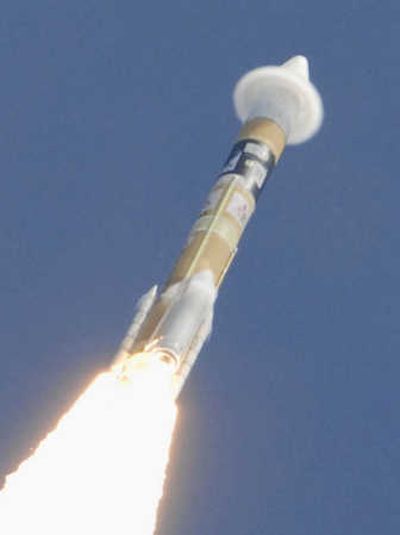Japan launches moon-bound orbiter

TOKYO – After a 17-year hiatus between lunar missions, Japan launched an unmanned orbiter today that carries the hopes of a nation looking to claim its place as a serious space power.
Taking advantage of a lull in rainy weather, the Kaguya orbiter lifted off from Tanegashima island in southern Japan, propelled by a domestically built H-2A solid-fuel rocket.
Its 21-day trip to the moon begins a yearlong mission that Japan’s civilian space agency, known as JAXA, is promoting as the most significant lunar expedition since America’s Apollo program of the 1960s and early ‘70s.
The mission comes at a crucial time for Japan’s space program. JAXA faces accusations that it lacks a vision capable of challenging China’s accelerating space ambitions in the nations’ rivalry for leadership in east Asia. And the agency finds itself competing for the favor of Japanese politicians now more inclined to back defense-related space programs, such as completing a network of spy satellites and joining with the U.S. to develop a ballistic missile shield.
JAXA is hoping that the long-delayed launch of the 3-ton, $480 million Kaguya will be a step toward rekindling excitement in Japan for the scientific side of space exploration.
The satellite is projected to descend into orbit just 60 miles above the moon’s surface, mapping uncharted polar areas, examining the makeup of the soil and searching for signs of ice. It also carries a high-definition TV camera provided by national broadcaster NHK, which is expected to send back dramatic images of the moon and Earth from the moon.
“We learned a lot from Apollo, but the landing points were all near the equator and on the front side of the moon,” says Seiichi Sakamoto, a professor of space science at JAXA. “Now it is time to do something really interesting, to complete the imaging and even to look at where to put future facilities for a manned base.”